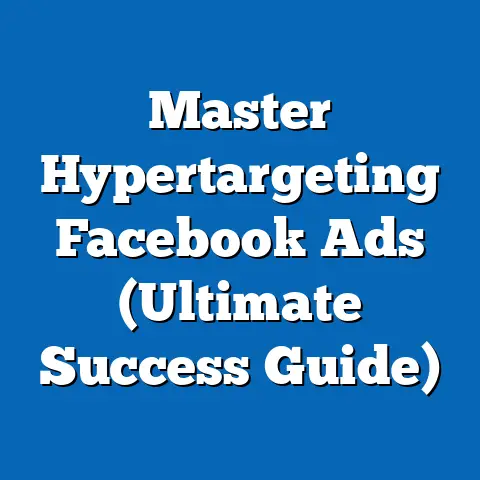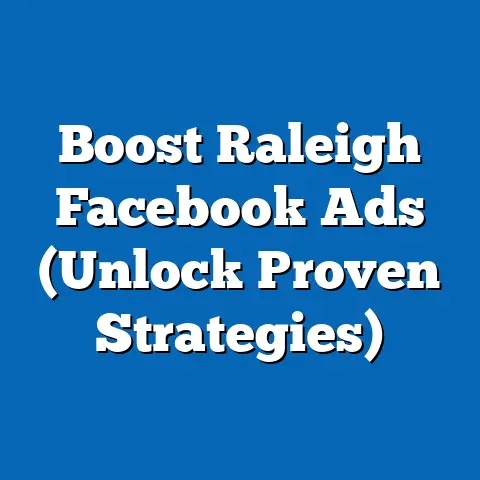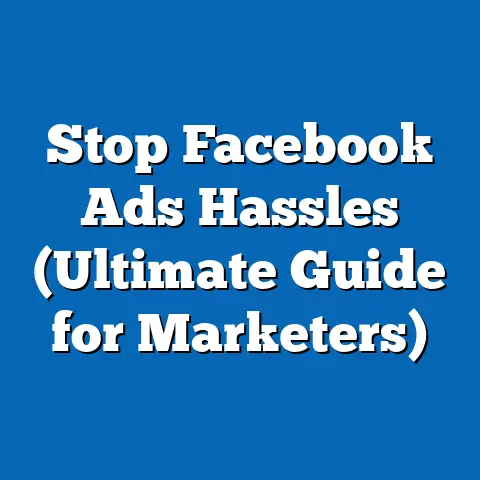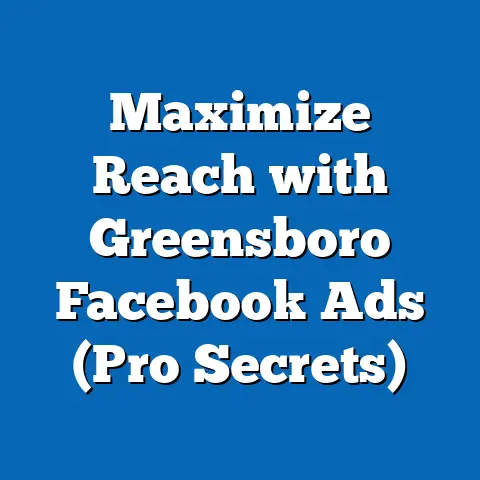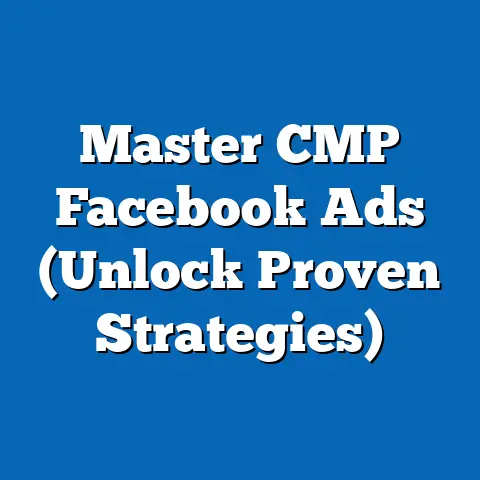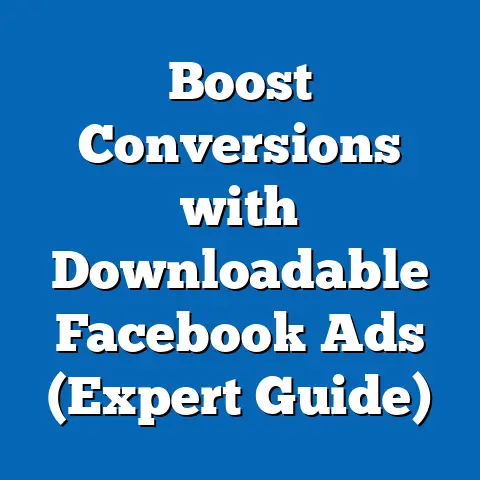Boost Engagement with Facebook Ad Bots (Proven Strategies)
The advertising world is in constant motion, a relentless dance of innovation and adaptation. I’ve seen firsthand how technology has reshaped marketing, turning traditional strategies on their head. It’s no longer enough to simply broadcast a message; you need to create a conversation, a connection. Artificial intelligence and automation have revolutionized how businesses engage with their audiences, and one of the most exciting developments is the rise of Facebook ad bots. In this article, I’ll guide you through the world of Facebook ad bots, showing you how they can revolutionize your engagement and drive conversions.
Understanding Facebook Ad Bots
Defining Facebook Ad Bots
Facebook ad bots are essentially automated messaging systems integrated within Facebook’s advertising ecosystem. They’re designed to interact with users who engage with your ads, providing instant responses, personalized content, and 24/7 availability. Think of them as digital assistants that can answer questions, provide information, and guide potential customers through the sales funnel, all without human intervention.
These bots leverage natural language processing (NLP) and machine learning (ML) to understand user queries and respond in a relevant and engaging manner. They can be programmed to handle a wide range of tasks, from answering basic FAQs to providing product recommendations and even processing orders.
The Evolution of Advertising on Social Media
To truly appreciate the power of Facebook ad bots, it’s helpful to understand the evolution of advertising on social media. Back in the early days of Facebook, advertising was relatively simple: static images and text ads targeted based on basic demographics. Over time, Facebook introduced more sophisticated targeting options, video ads, and interactive formats.
However, even with these advancements, there was still a disconnect between ads and user engagement. Users could like, share, or comment on ads, but there wasn’t a seamless way to have a meaningful conversation. This is where ad bots come in. They bridge the gap between advertising and engagement, allowing businesses to create personalized, interactive experiences for their target audience.
I remember when Facebook first introduced Messenger bots. I was skeptical, but I quickly realized their potential. The ability to provide instant support and personalized recommendations directly within Messenger was a game-changer.
The Importance of Engagement in Advertising
Defining Engagement
In the context of Facebook ads, engagement refers to the various ways users interact with your ads, including:
- Likes: A simple indication of approval or interest.
- Shares: Spreading your ad to a wider audience through the user’s network.
- Comments: Engaging in a conversation about your ad or product.
- Clicks: Visiting your website or landing page.
- Saves: Saving the ad for later viewing.
High engagement rates are crucial for the success of your ad campaigns. They signal to Facebook that your ads are relevant and interesting to your target audience, which can lead to lower ad costs and increased reach.
Impact of Engagement on Brand Loyalty and Awareness
Effective engagement can translate to increased brand loyalty and awareness in several ways:
- Building Relationships: By engaging in conversations with users, you can build relationships and establish trust.
- Increasing Brand Visibility: When users share or comment on your ads, they’re essentially endorsing your brand to their network, increasing your visibility.
- Driving Conversions: Engaged users are more likely to convert into customers. They’re more informed, more trusting, and more likely to take action.
I’ve seen firsthand how engagement can transform a struggling ad campaign into a success story. One of my clients, a small e-commerce business, was struggling to generate sales through Facebook ads. After implementing a Messenger bot that provided personalized product recommendations, their engagement rates soared, and their sales increased by 30%.
How Facebook Ad Bots Enhance Engagement
24/7 Availability
One of the biggest advantages of ad bots is their 24/7 availability. Unlike human customer service representatives, bots can interact with potential customers at any time, day or night. This is especially important for businesses that target international audiences or cater to customers with varying schedules.
Imagine a potential customer browsing your products at 2 AM. With a human customer service representative, they would have to wait until morning to get their questions answered. With an ad bot, they can get instant answers and personalized recommendations, increasing the likelihood of a purchase.
Personalized Interactions
Ad bots can deliver personalized messages based on user behavior and preferences. By tracking user interactions and analyzing their data, bots can tailor their responses to individual needs. For example, if a user has previously viewed a specific product category, the bot can recommend similar products or offer a discount on their next purchase.
Personalized interactions can significantly increase user engagement. Users are more likely to respond to messages that are relevant to their interests and needs.
Instant Responses
In today’s fast-paced world, people expect instant gratification. They don’t want to wait hours or days for a response to their questions. Ad bots can provide instant responses, maintaining user interest and reducing bounce rates.
I’ve found that the faster you respond to user inquiries, the more likely they are to convert. Ad bots allow you to provide instant support, even when your team is unavailable.
Interactive Content
Ad bots can facilitate interactive content such as quizzes, polls, or games that encourage user participation. Interactive content is a great way to capture user attention and generate leads.
For example, a clothing retailer could create a quiz that helps users determine their personal style. Based on their answers, the bot could recommend specific products or offer a personalized styling consultation.
I once ran a campaign for a local restaurant that used a Messenger bot to run a trivia contest. Users who answered the trivia questions correctly were entered into a drawing to win a free meal. The campaign generated a ton of engagement and helped the restaurant attract new customers.
Proven Strategies for Implementing Facebook Ad Bots
Strategy 1: Defining Your Audience
Before you start building your ad bot, it’s important to define your target audience. Who are you trying to reach? What are their interests, needs, and pain points?
Facebook’s audience targeting tools can help you narrow down your audience based on demographics, interests, behaviors, and connections. You can also create custom audiences based on your existing customer data or website traffic.
Audience segmentation is crucial for effective engagement. By segmenting your audience into smaller groups based on their characteristics, you can tailor your bot interactions to their specific needs.
Strategy 2: Creating Compelling Ad Copy
Your ad copy is the first thing users will see, so it’s important to make it compelling. Your ad copy should clearly communicate the value of your product or service and prompt users to interact with your bot.
Here are some tips for writing effective ad copy:
- Use strong headlines: Your headline should grab the user’s attention and make them want to learn more.
- Highlight the benefits: Focus on the benefits of your product or service, not just the features.
- Use a clear call to action: Tell users exactly what you want them to do (e.g., “Message us now,” “Learn more,” “Get a free quote”).
I’ve found that using questions in your ad copy can be a great way to engage users. For example, “Are you looking for the perfect gift?” or “Need help finding the right product?”
Strategy 3: Utilizing Facebook Messenger
Facebook Messenger is a powerful tool for direct communication with users. By integrating Messenger into your ad campaigns, you can create a seamless, personalized experience for your target audience.
Here are some strategies for building a Messenger bot that enhances user experience and engagement:
- Welcome Message: Create a welcoming message that greets users when they first interact with your bot.
- Quick Replies: Use quick replies to provide users with common options and guide them through the conversation.
- Persistent Menu: Create a persistent menu that allows users to access key features of your bot at any time.
- Personalized Recommendations: Use user data to provide personalized product recommendations or offers.
I always recommend starting with a simple Messenger bot and gradually adding more features as you learn what works best for your audience.
Strategy 4: A/B Testing Your Bots
A/B testing is the process of comparing two versions of your bot to see which one performs better. By A/B testing your bot interactions, you can refine your strategy and improve your engagement metrics.
Here’s a step-by-step guide on how to conduct effective A/B tests for ad bots:
- Define your goal: What do you want to improve (e.g., click-through rate, conversion rate, engagement rate)?
- Create two versions of your bot: Change one element at a time (e.g., headline, call to action, message content).
- Split your traffic: Divide your traffic evenly between the two versions of your bot.
- Track your results: Monitor your key metrics to see which version performs better.
- Implement the winning version: Use the version that performs better for your future campaigns.
I’ve found that A/B testing is essential for optimizing your bot interactions and maximizing your ROI.
Strategy 5: Analyzing Engagement Metrics
To measure the effectiveness of your Facebook ad bots, it’s important to track key metrics such as:
- Click-Through Rate (CTR): The percentage of users who click on your ad and interact with your bot.
- Conversion Rate: The percentage of users who take a desired action (e.g., make a purchase, sign up for a newsletter).
- Engagement Rate: The percentage of users who interact with your bot (e.g., send a message, click on a button).
- Retention Rate: The percentage of users who continue to interact with your bot over time.
By analyzing these metrics, you can identify areas for improvement and make informed adjustments to your campaigns.
I always recommend using Facebook Analytics to track your bot performance and identify trends. You can also use third-party analytics tools to get more detailed insights.
Case Studies of Successful Facebook Ad Bot Campaigns
Case Study 1: Sephora
Sephora, the beauty retailer, has successfully implemented a Messenger bot to provide personalized product recommendations and beauty tips. Their bot asks users a series of questions about their skin type, makeup preferences, and beauty concerns. Based on their answers, the bot recommends specific products and provides personalized beauty tips.
The results have been impressive. Sephora’s Messenger bot has generated high engagement rates and has helped the company drive sales.
Lessons Learned:
- Personalized recommendations are highly effective.
- Interactive content can capture user attention.
- Messenger is a great platform for direct communication.
Case Study 2: Domino’s
Domino’s, the pizza chain, has implemented a Messenger bot that allows users to order pizza directly from Facebook. Their bot guides users through the ordering process, allowing them to customize their pizza, choose their delivery address, and pay for their order.
The results have been equally impressive. Domino’s Messenger bot has made it easier for customers to order pizza and has helped the company increase sales.
Lessons Learned:
- Convenience is key.
- Bots can streamline the ordering process.
- Messenger can be a valuable sales channel.
I’ve found that the most successful ad bot campaigns are those that provide real value to users. Whether it’s personalized recommendations, helpful information, or a convenient ordering process, your bot should make life easier for your target audience.
Conclusion: The Future of Facebook Advertising with Bots
Facebook ad bots are transforming the advertising landscape, offering businesses a powerful new way to engage with their target audience. By providing 24/7 availability, personalized interactions, instant responses, and interactive content, ad bots can help you build relationships, increase brand visibility, and drive conversions.
As technology continues to evolve, I expect to see even more sophisticated ad bot strategies emerge. I believe that ad bots will become an essential part of every successful Facebook advertising campaign.
I encourage you to consider integrating ad bots into your own marketing plans. By staying ahead of the curve and embracing this innovative technology, you can connect with your audience in meaningful ways and achieve your business goals. The future of Facebook advertising is conversational, personalized, and automated, and ad bots are leading the way.

